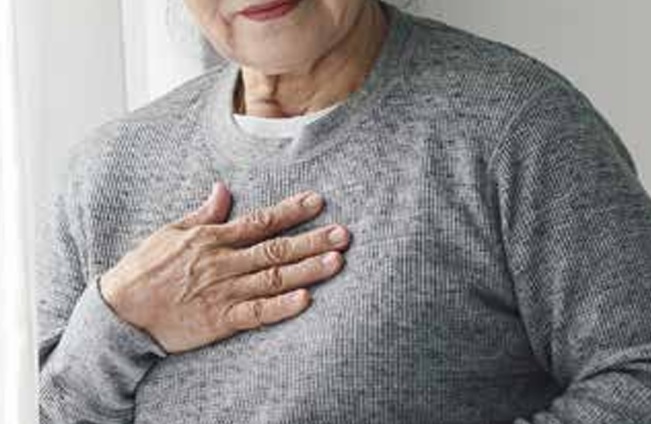
In recent months, many parts of Asia, especially East, Southeast and South Asia, have seen temperatures soar as the phenomenon of extreme heatwaves becomes increasingly common and more intense.
China and Japan logged their hottest August on record this year, while in-person classes in the Philippines were suspended for two days in April due to extreme heat. Soaring temperatures in Thailand during April even saw Bangkok’s heat index – which measures what a temperature feels like to the human body, taking into account relative humidity – cross 52°C and was deemed to be “very dangerous.”
In Singapore, the local meteorological service confirmed that temperatures could surge higher in 2024 than 2023 – the country’s fourth-hottest year since records began in 1929.
While warm to hot weather is often expected in these parts of Asia, extreme heat can pose serious risks to human health. We now take a look at the increasingly common occurrences of extreme heatwaves, how they affect the body, and what steps you can take to protect yourself and your loved ones during these increasingly frequent events.
WHAT IS A HEATWAVE?
A heatwave is a prolonged period of excessively hot weather, which may be accompanied by high humidity, particularly in oceanic climate countries. The World Meteorological Organisation (WMO) defines a heatwave as a period of more than five consecutive days where the daily maximum temperature exceeds the average maximum temperature by 5°C or more. However, the definition of a heatwave can vary significantly depending on the climate of the region in question. In Singapore, a heatwave is defined as three consecutive days when daily maximum temperatures are at least 35°C.
Heatwaves occur when high atmospheric pressure builds up in an area, trapping heat and moisture beneath it. This phenomenon is often described as a “heat dome.”
The warm air becomes stagnant, and the heat builds up over several days or even weeks. Various factors, including climate change, are contributing to the increased frequency and intensity of heatwaves globally.
In fact, global warming is leading to higher baseline temperatures, making heatwaves more severe and more likely to occur. Urbanisation is another significant factor, as cities with lots of concrete, asphalt and limited greenery can create “urban heat islands,” where temperatures are significantly higher than in surrounding rural areas.
Also, heatwaves are not just about daytime temperatures. Warm nights, where the temperature does not drop significantly, are also characteristic of heatwaves and can exacerbate its health impacts by not allowing the body to cool down adequately after sunset.
HOW HEATWAVES AFFECT THE BODY
The human body is equipped with mechanisms to regulate its internal temperature, primarily through sweating and increasing blood flow to the skin. As the body gets hotter, blood vessels open up. This leads to lower blood pressure and makes the heart work harder to push the blood around the body. At the same time, sweating leads to the loss of fluids and salt and, crucially, changes the balance between them in the body. These regulating mechanisms can become overwhelmed during a heatwave and lead to various health problems, including:
Heat Exhaustion
This condition occurs when the body loses an excessive amount of water and salt through excessive sweating. It most commonly affects older adults, individuals with high blood pressure, and people who work in hot environments. Symptoms of heat exhaustion include heavy sweating, weakness, dizziness, nausea, headache, fainting, irritability, thirst, elevated body temperature and decreased urine output. Heat exhaustion can quickly escalate to heat stroke if not addressed.
Dehydration

High temperatures increase the risk of dehydration, especially if you are not drinking enough fluids. As people sweat, they can lose liquids to a point that can cause symptoms like dizziness, fatigue and confusion. In severe cases, it can even lead to kidney failure and other serious complications.
For example, dehydration can progress into shock, causing organs to shut down from lack of blood, oxygen and nutrients. This can lead to seizures and death. Dehydration can also reduce blood flow and magnify cardiac problems.
While dehydration can be very dangerous for everyone if it gets bad enough, it is especially dangerous for those with medical conditions and those on certain medications.
Heat Stroke

Heat stroke is a life-threatening condition that occurs when the body’s temperature regulation fails, and the body can no longer control its temperature. The body temperature rises to dangerous levels (above 40°C), and causes symptoms like confusion, loss of consciousness, rapid heartbeat, seizures, and hot, dry skin (due to the cessation of sweating). Heatstroke requires immediate medical attention as it can lead to organ damage and death.
Cardiovascular Stress
Heatwaves place additional strain on the heart as it needs to work harder to pump blood to the skin to dissipate heat, which causes blood pressure to drop. This can be particularly dangerous for people with pre-existing heart conditions as it is asking the heart to do a lot more work than it usually has to do, leading to an increased risk of heart attacks and strokes.
Respiratory Issues
High temperatures can exacerbate respiratory problems, especially for people with asthma or other chronic respiratory conditions like COPD. This is because heat increases metabolic demands, which might not be a problem for a physically conditioned, heat-adapted athlete, but could be deadly for someone with advanced heart or lung disease.
Heat Rash
Heat rash, also known as prickly heat, occurs when sweat ducts become blocked and swell, leading to discomfort and itching. Symptoms can range from small, inflamed bumps to larger bumps which look like goosebumps. Some forms of heat rash are very itchy. Heat rash is a common issue for young children and those in humid environments during heatwaves.
Heat Cramps
These painful muscle cramps, often in the legs or abdomen, occur due to the loss of salt and water through sweating. They are common during physical activity in hot weather and can be an early sign of heat exhaustion. Heat cramps usually affect workers who sweat a lot during strenuous activity. This sweating depletes the body’s salt and moisture levels. Low salt levels in muscles cause painful cramps. Heat cramps may also be a symptom of heat exhaustion.
Mental Health Impacts
Extreme heat does not just make us cranky and uncomfortable; it can also take a toll on our mental health. It can make it harder to think clearly and be productive at work. Studies have shown that extreme heat can increase anxiety, stress, and irritability. For individuals with mental health conditions, the effects can be even more pronounced.
Vulnerable Populations
While heatwaves can affect anyone, certain groups are more vulnerable to the health impacts of extreme heat.
Older Adults
Older adults are at a higher risk during heatwaves due to age-related physiological changes and chronic health conditions such as heart, lung, and kidney disease. They also do not sweat as much as younger people, which makes it harder for their bodies to cool down when temperatures spike. Older adults may also consume less fluid than younger individuals, which can increase the risk of dehydration.
Infants and Young Children
At the other end of the age spectrum, infants and young children are vulnerable to extreme heat because their bodies are less efficient at regulating temperature, and they can quickly lose body fluids through perspiration, which can lead to dehydration. Thus, they need to drink regularly, wear light clothing, and be kept cool.
Furthermore, babies and young children may not recognise the signs of heat-related illness, and they may not show early signs and symptoms of the effects of heat. They may just look unwell or be more irritable than usual. Babies may seem floppy, have drier skin, refuse to drink, or have fewer wet nappies than usual. The soft spot on top of a baby’s head (fontanelle) may also be lower than usual.
Individuals with Pre-existing Health Conditions
Individuals with pre-existing health conditions, such as heart disease, respiratory issues, diabetes, or mental health disorders, are also at higher risk during heatwaves.
Heat can set off flare-ups in a vast array of chronic health conditions, including:
- Rheumatoid arthritis
- Chronic obstructive pulmonary disease (COPD)
- Asthma
- Chronic kidney disease
- Hypertension
- Type 2 diabetes
- Cardiovascular disease
Our body’s organs are strained by hot days. Everything takes more effort. Remove some of the organ’s original capabilities, and heat can become an even bigger problem.
The lungs are perhaps among the most afflicted by heat, which traps smog and other pollutants at ground level. All kinds of respiratory conditions, from asthma to COPD and pneumonia, are made worse by the lower-quality air. Furthermore, medications for these conditions can also impair the body’s ability to respond to heat.
Low-Income Communities
A number of studies have shown that low-income communities are more exposed to the dangers of heatwaves and are most vulnerable to extreme heat.
This is due to:
- Lack of access to quality housing (many stay in overcrowded, poorly ventilated homes that offer little respite from the heat).
- Lack of air conditioning (even when air conditioning is available, people with lower incomes are less likely to be able to afford to use them).
- Limited access to adequate healthcare.
Outdoor Workers and Athletes
Sweltering temperatures also badly affect outdoor workers and athletes.
- Those who work outdoors, such as construction workers, farmers, and landscapers, are at increased risk of heat-related illnesses due to prolonged exposure to high temperatures.
- Sports events and training sessions during heatwaves can also be particularly dangerous.
Adapting to Heatwaves
With heatwaves becoming more frequent and intense, adaptation is key to protecting our health.
Stay Hydrated
One of the key aspects of protecting yourself and your loved ones from extreme heat is to ensure that everyone stays hydrated.
- Drink plenty of fluids, even if you do not feel thirsty.
- Water is the best option, but sports drinks can also help replenish electrolytes lost through sweating.
- Avoid alcohol and caffeinated beverages, which can dehydrate the body.
- To cool yourself down, have cold drinks instead of hot drinks.
- Take a cool shower or put cool water on your skin or clothes.
Seek Shade and Stay Indoors
- Stay indoors during the hottest part of the day, typically between 10 AM and 4 PM.
- Keep your living space cool by using blinds or curtains to block out the sun.
- Use fans or air conditioning to keep your living space cool.
- If you do not have air conditioning, consider using a portable fan with a bowl of ice in front to create a makeshift cooling system.
Check on Vulnerable Individuals
It is important to check the temperature of your rooms, especially those where people at higher risk sleep.
Check on these vulnerable individuals:
- Older adults
- Young children
- Pregnant individuals
- Those with chronic health conditions
Ensure they have access to cool environments and are staying hydrated.
Dress Appropriately
- Wear lightweight, loose-fitting, and light-coloured clothing.
- If going outdoors, wear a hat and sunglasses for additional protection.
- Applying sunscreen with a high SPF is essential to protect against harmful UV rays.
Limit Outdoor Activities
- Limit outdoor physical activity, especially during the hottest part of the day.
- If you need to exercise or perform outdoor work, do so during the cooler parts of the day, such as early morning or late evening.
- Take frequent breaks in the shade and drink plenty of water.
Monitor Weather Updates
During a heatwave, stay informed about:
- Weather forecasts
- Heat advisories and warnings
Recognise Heat-Related Illnesses
Knowing the symptoms of heat exhaustion and heat stroke can be life-saving.
Conclusion
As the planet continues to warm, heatwaves are likely to become more frequent and intense.
Understanding the health risks associated with extreme heat and taking proactive measures to protect yourself and your loved ones is essential.
By staying informed, prepared, and resilient, we can better navigate the challenges posed by heatwaves and adapt to live in a warmer world. PRIME












Leave A Comment